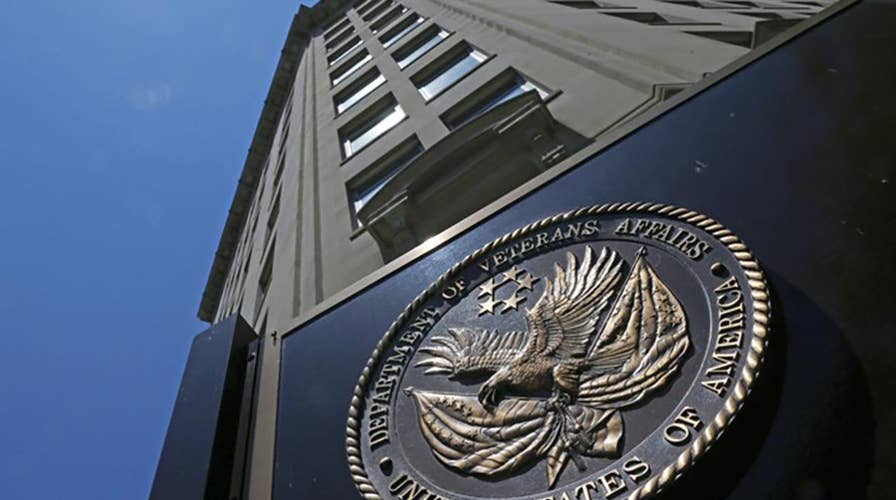New VA guidelines allow veterans facing long drives, wait times to get private-sector care
Marine veteran Josh Hartley weighs in on the pitfalls of the Veterans Affairs health care system and what needs to be done to fix it.
We served in the post of Secretary of Veterans Affairs for a combined total of 12 years from 2001 to 2017, coinciding with the terrorist attacks on the United States and the war years that followed.
As veterans, we served in Vietnam and in the post-Vietnam era military and understand all too well the problems that have beset the Department of Veterans Affairs in the past and the challenges now facing the VA as it cares for veterans from World War ll and Korea through Vietnam, Kuwait, Afghanistan, Iraq and Syria.
The VA today is experiencing rapid changes in health care and the demographic convergence of three generations of warriors with varying health and benefits concerns and different attitudes about a VA that is tailoring its health care delivery to best meet the needs of the populations it serves now and in the future.
PRESIDENT TRUMP – AND OUR VETERANS – ARE WINNING AGAINST AN ENTRENCHED VA BUREAUCRACY
The cornerstone of the VA’s ongoing modernization is a continued commitment to improving internal clinical services for veterans through better leadership and management practices and delivering top quality access to health care at all levels of its hospitals and clinics across this nation.
The VA excels in large part because of an army of dedicated civil servants and close relationships with academic institutions and research entities that work collaboratively with the VA to bring excellent care to veterans. And when the VA has not been able to deliver acceptable care or in cases where veterans live too far from VA services, Congress has generously funded and expanded the VA’s Community Care Program so veterans can see private doctors closer to home.
We know veterans, like their fellow citizens, are looking for more convenience to get the best health care available closer to home and are capable of making educated decisions about their health care. We also know that this effort will not succeed until the VA takes a hard look at its aging infrastructure’s ability to align with and complement this transformation and reach veterans in remote, rural and emerging growth areas.
Community Care’s “Choice” program was implemented hastily in 2014 as a Congressional response to a growing crisis in the VA of lengthy wait times for care first discovered at the Phoenix VA hospital. Since then, Choice has helped give many more veterans with the option of non-VA care in certain limited circumstances, but it’s also had many problems. Later this year, as a result of Congressional legislation passed in 2018, Community Care and specifically Choice will merge to become easier for veterans to understand and navigate. New regulations recently proposed will place veterans at the center of their health care decisions.
Those decisions will be part of a conversation between the veteran and his or her VA clinician and will expand eligibility for private sector health care when the VA is either unable to provide the care a veteran needs in a specific number of days or a veteran has a longer travel time than prescribed to reach relevant VA services. The VA will use this eligibility and access to outside care to further shape its health care system into what we have long advocated: a modern, integrated network that delivers services based on widely accepted industry best practices found in the private sector and other successful government health care systems.
Some critics insinuate these moves to empower veterans and spur the VA to be more customer-focused may somehow lead to the dismantling of the VA and to outsourcing all medical care for veterans to the private sector. This presumption discounts and disregards what is happening inside the VA today because of efforts begun during our time in office and since then.
There has been a dramatic rise in trust by patients who use the VA, VA employee morale is on the upswing, wait times for appointments are down significantly, the number of patient visits is increasing, the quality of VA health care compared to the private sector is as good or better in many areas, and the specialization in the VA is unique and cannot be replicated in the private sector. In sum, veterans are using VA more and they are not flocking to private doctors.
We are encouraged this transformation of the VA health care is being realized after many years of effort under multiple VA secretaries and with the strong support of the president, both parties in Congress, and many of the leading Veterans Service Organizations.
CLICK HERE TO GET THE FOX NEWS APP
We know veterans, like their fellow citizens, are looking for more convenience to get the best health care available closer to home and are capable of making educated decisions about their health care. We also know that this effort will not succeed until the VA takes a hard look at its aging infrastructure’s ability to align with and complement this transformation and reach veterans in remote, rural and emerging growth areas.
Congress must share that responsibility by funding the VA in the years ahead to meet this strategic vision of an agile and responsive health care system that serves a changing and transient veteran population.
Jim Nicholson, James Peake and Robert McDonald are all former secretaries of Veterans Affairs.

